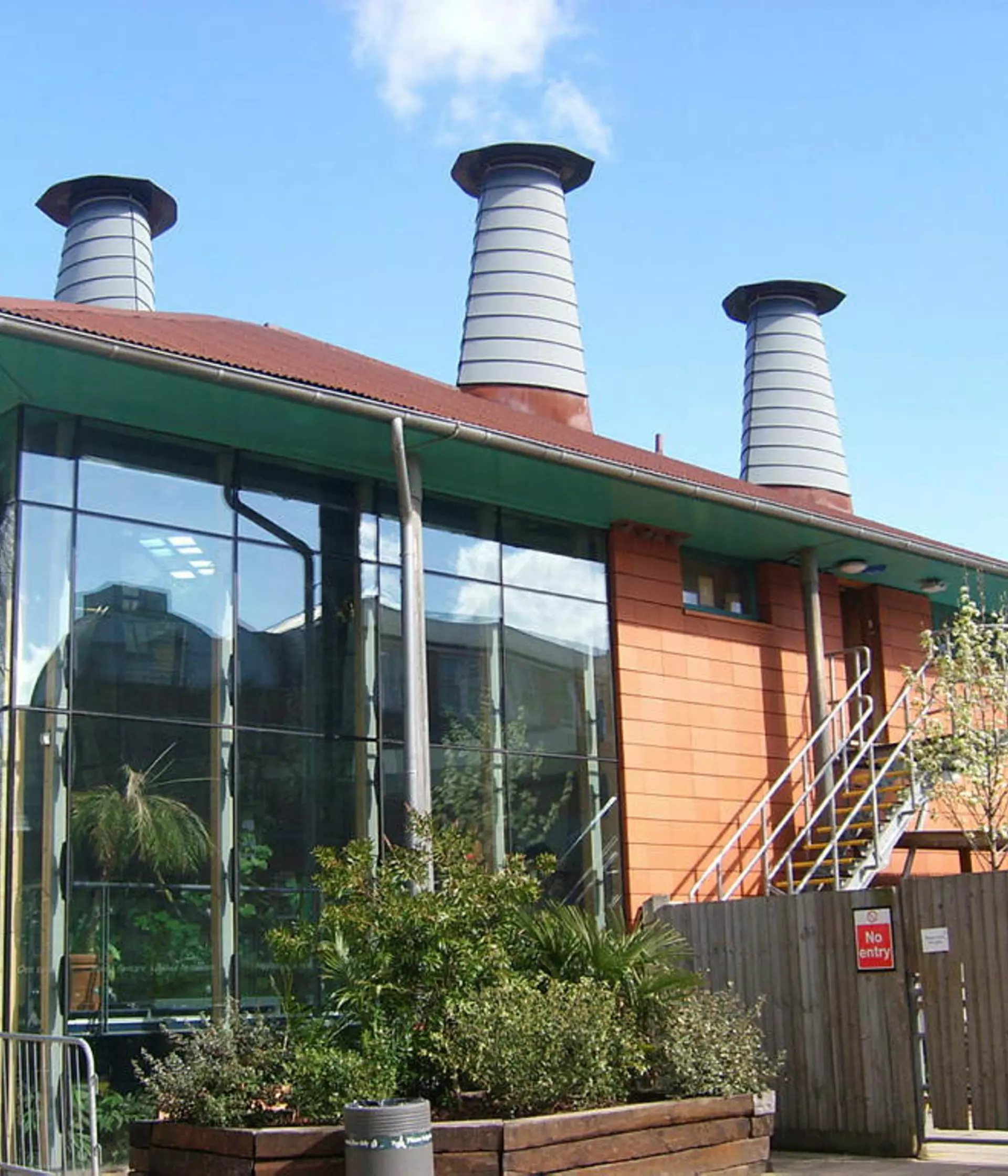Sustainability at the Zoo
Tiny Giants may be home to some of London Zoo’s smallest residents, but just as much thought and attention went into creating the best possible conditions for them as with any other animal habitat you’ll find at the Zoo today. Our amazing minibeasts are housed in a building known as the Millennium Conservation Centre. Designed by Phil Wharmby and Mike Cousins at Wharmby Kozdon Architects, it was developed between 1997-99.
The centre was conceived as a millennium project, and biodiversity conservation was always top of its agenda. After all, some of the species being bred here are critically endangered in the wild, or would have been driven to extinction without ZSL reintroductions, like the Partula snails. With that in mind, the architects were careful to minimise the building’s own environmental impacts.
The centre was built using materials that required little energy to produce, with the timber being sourced from sustainable forests. Energy efficiency was also a priority. Much of its heat comes from sunlight. The expansive glass windows include reflective solar blinds that help reduce glare during the day but insulate the building by night. The roof is made of galvanised steel, with a thin but effective layer of Actis insulation that helps prevent heat loss.
Architecture inspired by wildlife
In some ways, the building takes its cue from the natural world and the invertebrates within. The floorplan gently spirals, rather like a snail shell. In a structure that recalls termite nests, a borehole was sunk deep underground, in order to pump up cold water to help cool the building in warmer weather. As an Independent article put it in the centre’s opening, year, it’s a “hi-tech building that manages to look organic”.
The building was officially opened by Her Majesty The Queen and His Royal Highness The Duke of Edinburgh in 1999. The opening exhibit was called Web of Life, and it was later renamed B.U.G.S! (Biodiversity Underpinning Global Survival).
The interior was always intended to offer flexibility as the Zoo’s exhibits and collections evolved over time. It has already seen some exciting changes, including the addition of Europe’s first walk-through spider exhibit, In With the Spiders, in 2015, and now London Zoo’s very own coral reef.
Creating a sustainable Zoo
Fighting the climate crisis from the Zoo
The climate crisis is one of the greatest threats to wildlife – and we're working to cut our carbon emissions by half by 2030.
Tiny Giants today
Renovated and reopened in 2021 as Tiny Giants, with a brand new reef exhibit, the centre continues to showcase some of the smallest yet most significant creatures on the planet. Its 7m-long coral reef tank which includes a number of corals that have been rescued by ZSL after being illegally traded on the international black market, along with plenty of dazzling tropical fish.
Meanwhile, the building continues to champion environmental-friendly practices and materials. We have a carpet made from recycled fishing nets, as part of an initiative by ZSL and partners to reduce plastic waste in our oceans, while the flooring near the corals exhibit is made with recycled trainers.
